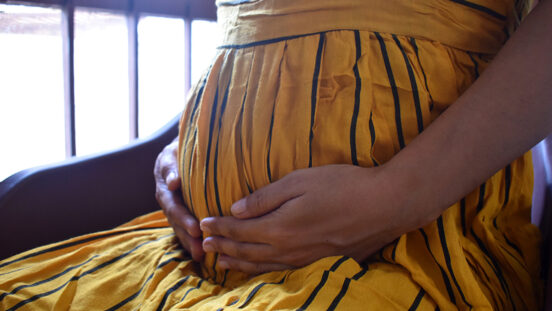Understanding growth charts: What is the average baby weight?
Remember, average weight is not 'normal' weight.
Like adults, babies come in all shapes and sizes and so it’s important for parents to remember that average weight is not ‘normal’ weight.
If a baby’s weight is in a lower or a higher percentile, this is not necessarily a cause for concern with their growth or physical development.
With this in mind, health professionals use growth charts to track your child’s growth and development in the early years and they can help to show whether your child is growing in a healthy way.
According to the World Health Organization, the average birth weight of a full-term male baby is 3.3 kilograms. The average weight of a full-term female is 3.2kg.
At delivery, healthy experts consider a low birth weight to be less 2.5kg.
After birth, it’s common for babies to lost around 10% of their weight. This decrease is mostly due to fluid loss and usually not a cause for concern. Most babies gain back this weight within one week.

Your baby is weighed on a special infant weighing scale.
Growth charts are graphs that show changes in your child’s length or height, weight and head circumference over time.
Your baby’s weight will be plotted against a weight-for-age growth chart.
If your baby record book does not contain the World Health Organization growth standards percentile charts and tables, you can find them here.
According to the World Health Organization’s growth standards, general guidelines for weight and growth measurements based on breastfed babies, are:
- a baby loses 5-10% of birth weight in the first week and regains this by 2 weeks
- birth weight is doubled by 4 months and tripled by 13 months in boys and 15 months in girls
- birth length increases 1.5 times in 12 months
- birth head circumference increases by about 11 cm in 12 months
Keep in mind, these are general guidelines as all babies grow differently.

Your baby’s weight will be plotted against a weight-for-age growth chart.
How is your baby’s growth measured?
Length is measured when your baby is lying down. For children over two years, height is measured when they’re standing up.
Weight is measured without clothing on a special infant weighing scale. After two years, weight is measured in ‘light’ clothing on a regular set of scales.
Head circumference is usually measured by putting a tape measure around your baby’s head. Babies’ heads grow rapidly in the first year, which makes it easy to check that they’re growing in a healthy way.
Your baby’s length, weight and head circumference will help you and your doctor to gauge your baby’s growth and physical development. Whether or not your baby is hitting their milestones will also be considered.
If you are concerned about your baby’s growth or development, see a medical professional for a check up on your baby’s general health and wellbeing.




